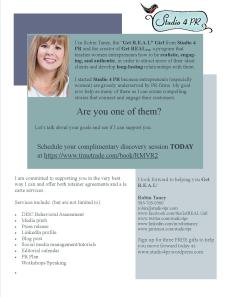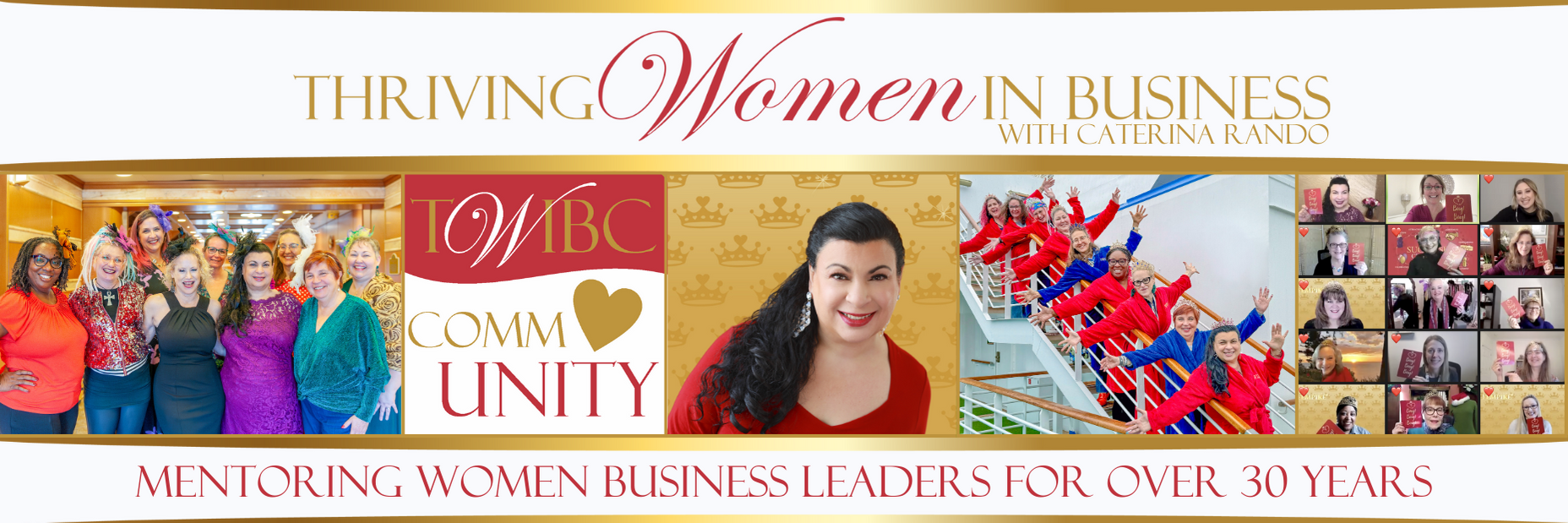What’s in your media kit?
A media kit contains information about your business that the media can use when doing a story. Many business owner mistakenly think that because their business isn’t “sexy” enough, that they don’t need one.
Listen to me. Whether you are a mom making designer handbags at your kitchen table or the CEO of a Fortune 500 company, you are a rock star. In other words, in order to establish yourself as a thought leader in your field, as the go-to person when the media needs a comment, you need a media kit.
What you put in it, though, can make all the difference.
Here are 7 “must haves” if you want to get noticed:
- Bio — All of your key leaders (anyone who is cleared to talk to the media) should have a one page bio. Include relevant information that establishes their (or your) credibility, but don’t make it sound like a resume.
- Photo — Every good media kit includes professional photos of the company’s principles. They should be professional headshots, high res jpegs with a dpi of 300
- Company history — What is your company’s history? What makes it interesting? Share the triumphs and challenges that have helped the company get where it is today.
- Products/Services — Include a one-page sell sheet on each of your products and services listing the features/benefits and answering the questions that someone might ask about what you sell.
- Story ideas — Sometimes it’s not clear what kind of story is there, but it doesn’t mean that it’s not newsworthy. You just need to show the reporter how you can help them.
 Include several ideas or angles, along with what you can provide in terms of footage, photos, and interviews.
Include several ideas or angles, along with what you can provide in terms of footage, photos, and interviews. - Additional media coverage– Include links to other media coverage you’ve received. This gives the reporter additional background info as well as an idea of what kind of interview you or others in your company would be. If you haven’t received previous media coverage, you can include copies of news releases, links to videos of speaking engagements, etc.
- Contact info: Make it easy for a reporter to reach someone by including the person who handles media inquiries. This means name, phone number, email and social media handles.
Other items that are good (but not essential) to include are:
- Interview questions
- Quotes
- Fast facts
Hard copy or digital?
There are two schools of thought on whether a media kit should be hard copy or digital. If it’s hard copy, you have something tangible you can give people who ask what you do. If you have something digital, you can easily update it. I vote for digital mainly because it’s there whenever anyone wants to access it — whether it’s a reporter, a customer, or a prospect. You can include links to articles and videos and make photos easy enough to download and drop in a story.
By making it easy for anyone to get to know you anytime, anywhere, you are dramatically increasing your chances of being found by your ideal client.
However, media kits are not just for the media. Share them with current and prospective customers, vendors, suppliers, and strategic alliances.
I’d love to hear what’s in your media kit. Feel free to comment below and share this post if you found it useful.
Thank you for sharing this space with me!
Robin Taney, (aka the “Get R.E.A.L Girl”) is the owner and founder of Studio 4 PR. She works with creative, independent, and “kitchen table” entrepreneurs who are highly motivated to be found by their perfect client. You can connect with her on Facebook, Twitter, LinkedIn, and Pinterest, and sign up for mailing list You are welcome to use this post on your blog, provided you do not alter it in any way and include a link to this blog.
Robin is also the City Director for the Rochester digital edition of Today’s Innovative Woman magazine. Click here for a free subscription or to learn more about advertising packages.
